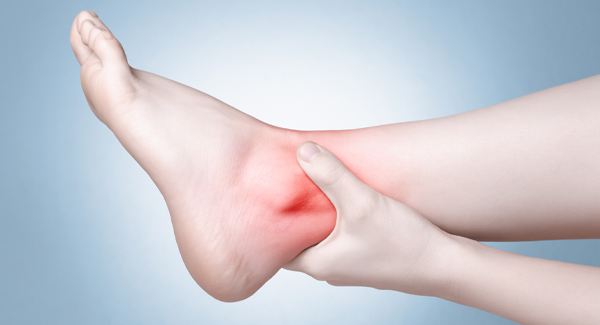Elbow Surgery Options
Elbow surgery can be challenging, not only because the elbow is relatively small and complex, but also because patients need long-lasting, durable treatments. Surgical options are considered only when medications and other measures don’t relieve severe joint pain and loss of motion.
Here is an overview of the most common types of elbow surgeries. They can be performed arthroscopically (using small incisions and fiberoptic, camera, technology) or as a conventional open procedure.
Synovectomy
This procedure removes the synovium – the membrane lining the joint. In a healthy elbow, the synovium produces a lubricating fluid, but in rheumatoid arthritis (RA) and other forms of inflammatory arthritis, the synovium becomes inflamed, eventually eroding cartilage and causing pain and swelling. Removing the synovium temporarily stops this process. Rehabilitation takes at least two months.
Best candidates: Patients in the early stages of inflammatory arthritis with little or no cartilage damage.
Pros: Synovectomy can improve symptoms significantly, says Robert N. Hotchkiss, MD, director of research in the hand and upper extremity service at Hospital for Special Surgery in New York City. “Performance and pain scores improve, swelling goes down and many [patients] return to near-normal function,” he says. Arthroscopic synovectomy usually results in a faster, less painful recovery.
Cons: Synovectomy doesn’t stop disease progression. After several years, the synovium starts to regrow and symptoms usually return. (The surgery can be repeated). In addition, nerve injury is a significant risk in arthroscopic elbow procedures because the tight space is difficult to navigate and major nerves are close to the joint.
Arthroscopic Debridement
This technique removes bony growths in the joint along with any loose bits of bone or cartilage. In some cases, the upper end (or head) of the radius (a bone in the forearm) is also removed. Debridement is used for posttraumatic and primary osteoarthritis (OA) in the elbow. Recovery time – between 12 and 24 weeks (including rehabilitation) – depends on how the procedure is performed and the age of the patient.
Best candidates: Patients with mild to moderate OA who have stiffness and minor pain. Those with pain throughout their full range of motion or advanced disease are not good candidates, according to Robert Wysocki, MD, a hand, wrist and elbow surgeon and assistant professor at Rush University Medical Center in Chicago.
Pros: Most people experience 80 to 95 percent pain relief and increased range of motion after the procedure. While open and arthroscopic procedures have equally successful outcomes, arthroscopic techniques are associated with faster healing and less pain.
Cons: Bony growths tend to recur and range of motion decreases over time, although many people continue to experience significant pain relief. Arthroscopic debridement “carries a risk of nerve injury for even the highly trained elbow arthroscopist,” Dr. Wysocki says.
Elbow Interpositional Arthroplasty
The goal of this procedure is to relieve pain that occurs when bone surfaces rub together. The ends of the bones are reshaped, and a small section of the patient’s Achilles tendon or other soft tissue is fitted between the joint surfaces. Recovery time, including healing and rehabilitation, can be up to four months.
Best candidates: Active people with primary OA or post-traumatic OA. Those with inflammatory arthritis who have too much damage for debridement but are too young for elbow joint replacement may also benefit. Candidates for the procedure must have a stable elbow (with ligaments that aren’t too loose to hold the bones in place) with minimal bone loss.
Pros: Interposition arthroplasty can relieve severe pain while retaining some elbow function, and unlike an artificial joint, transplanted tissue won’t loosen or dislocate. Bone is also preserved, which is crucial if elbow replacement is needed in the future. In Dr. Hotchkiss’s experience the results of the procedure have lasted for more than 15 years.
Cons: The procedure doesn’t completely relieve pain or restore full function and can’t be performed on some patients with severe disease.
Total Elbow Arthroplasty or Replacement
Similar to hip or knee replacement, this surgery replaces damaged parts of the elbow with artificial components. A linked implant consists of two metal stems – one in the humerus and one in the ulna – joined by a cobalt-chrome hinge pin that articulates with the joint. In an unlinked prosthesis, the humeral and ulnar components aren’t mechanically joined, relying instead on the surrounding tissue for joint stability. Linkable implants give the surgeon the option of leaving the implant linked or unlinked, depending on what’s found during surgery. Average recovery time is a minimum of 12 weeks.
Best candidates: Older, less active adults with end-stage inflammatory arthritis and OA or post-traumatic OA patients.
Because implants generally don’t last more than a few years, they are not recommended for people younger than 60.
Pros: Elbow replacement can relieve pain and restore lost motion and function in people with severely damaged and deformed joints.
Cons: The complication rate for elbow replacement is higher than for any other joint. Linked implants can ensure a stable elbow, even with severe bone loss, but tend to loosen and wear out quickly. Unlinked implants dislocate easily, and for that reason are used less often. High overall failure rates – 25 percent at five to seven years – are due in part to poor tissue quality in the joint and, paradoxically, to the effects of better arthritis drugs, which help patients live longer and stay active.
Overall Considerations for Elbow Surgery
Now that patients have medications like disease-modifying antirheumatic drugs (DMARDs) and biologics, they are living longer and are more active than in the past, and the joints adjacent to their elbows are healthier. “The elbow is painful and has severe disease, but the wrist and shoulder are nearly normal, which means implants have to last much longer and are subjected to greater loads and strains,” says Dr. Hotchkiss.
There are also few options when implants fail. “The ulna is a thin, narrow bone with a small diameter, so when an implant becomes loose, bone deficiency is a real problem. You can go from having an arm that can do light things quite well to one with no function at all,” Dr. Hotchkiss says. “It is acceptable to be skeptical about elbow arthroplasty.”

Stay in the Know. Live in the Yes.
Get involved with the arthritis community. Tell us a little about yourself and, based on your interests, you’ll receive emails packed with the latest information and resources to live your best life and connect with others.


